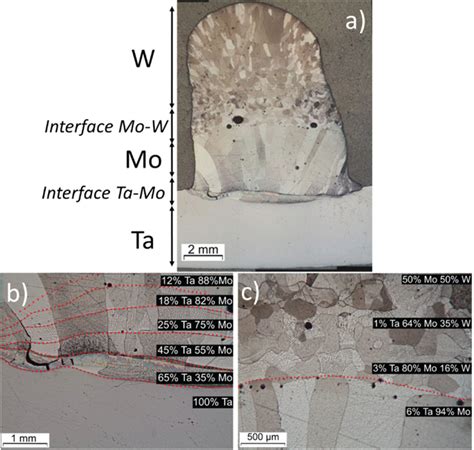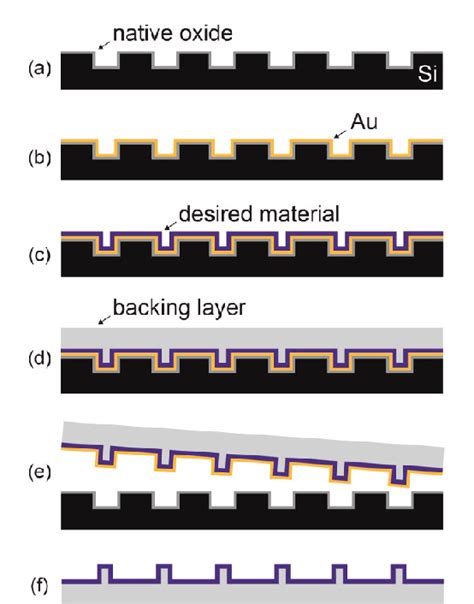fabrication of smooth patterned structures of refractory metals info_outlined. Nodes are locations in the document that facilitate reading from beginning to end. You can navigate node by node or select one to jump to. CNC machining is a subtractive manufacturing process in which a computer program guides different tools to create a product. The tools include drills, lathes, and mills that cut away at a workpiece to achieve desired specifications.CNC or computer numerical control is an NC system that employs a dedicated microcomputer as a machine control unit. The presence of a .
0 · Ultra
1 · Functionally graded structures of refractory metals by
2 · Fabrication of smooth patterned structures of refractory metals
3 · Fabrication of smooth patterned structures of refractory
4 · Fabrication of Smooth Patterned Structures of Refractory Metals
5 · Fabrication of Smooth Patterned Structures of
A box junction, denoted by yellow criss cross lines painted on the road, is intended to control traffic flow at busy crossings. The lines’ aim is to keep vehicles from entering the box if their .
Herein, we present a simple scheme to expand template stripping beyond the coinage metals to obtain structures for a broader set of . Abstract. The template-stripping method can yield smooth patterned films without surface contamination. However, the process is typically limited to coinage metals such as .info_outlined. Nodes are locations in the document that facilitate reading from beginning to end. You can navigate node by node or select one to jump to.Further, we demonstrate template-stripped multilayer structures that have potential applications for photovoltaics and solar absorbers. An entire patterned device, which can include a .
To this end, we present a design process and develop functional plasmonic nano-structures with pre-determined morphology by tuning the annealing parameters like the laser .Fabrication of smooth patterned structures of refractory metals, semiconductors, and oxides via template strippingFig. 1 (a) depicts the periodic structure of our presented absorber. It is composed of a Ti metal substrate, a pattern array (Ti-Al 2 O 3) deposited directly on the surface of the Ti substrate and . In the present work, graded structures comprising three dissimilar alloys, in particular tantalum, molybdenum and tungsten, were fabricated within the same structure using WAAM. These metals were deposited in their .
We have demonstrated that template stripping can provide a general route to various patterned materials beyond the coinage metals. Namely, template stripping can create .template-stripped multilayer structures that have potential applications for photovoltaics and solar absorbers. An entire patterned device, which can include a transparent conductor, .The template-stripping method can yield smooth patterned films without surface contamination. However, the process is typically limited to coinage metals such as silver and gold because other materials cannot be readily stripped from silicon templates due to strong adhesion. Herein, we report a more general template-stripping method that is applicable to a larger variety of .
info_outlined. Nodes are locations in the document that facilitate reading from beginning to end. You can navigate node by node or select one to jump to.Research Article www.acsami.org Fabrication of Smooth Patterned Structures of Refractory Metals, Semiconductors, and Oxides via Template Stripping Jo. Author: Claribel Farmer 6 downloads 0 Views 3MB Sizea smooth patterned structure of the desired material. Further, we demonstrate template-stripped multilayer structures that have potential applications for photovoltaics and solar absorbers. An entire patterned device, which can include a transparent conductor, semiconductor absorber, and back contact, can be fabricated.
The template-stripping method can yield smooth patterned films without surface contamination. However, the process is typically limited to coinage metals such as silver and gold because other materials cannot be readily stripped from silicon templates due to strong adhesion. Herein, we report a more general template-stripping method that is applicable to a larger .Fabrication of Smooth Patterned Structures of Refractory Metals, Semiconductors, and Oxides via Template Stripping Overview of attention for article published in ACS Applied Materials & Interfaces, September 2013Fabrication of smooth patterned structures of refractory metals, semiconductors, and oxides via template strippingFabrication of smooth patterned structures of refractory metals, semiconductors, and oxides via template stripping

Ultra
Fabrication of smooth patterned structures of refractory metals, semiconductors, and oxides via template stripping. . the process is typically limited to coinage metals such as silver and gold because other materials cannot be readily stripped from silicon templates due to strong adhesion. Herein, we report a more general template-stripping .Figure 1. Schematic for the template-stripping approach with a release layer. (a) A silicon (Si) template is patterned by conventional fabrication techniques. (b) A thin gold (Au) layer is deposited on the native oxide of the template. (c) A layer of the desired material is subsequently deposited on the Au. (d) A backing layer is added to the top surface of the deposited films. (e) .Fabrication of smooth patterned structures of refractory metals, semiconductors, and oxides via template stripping. . the process is typically limited to coinage metals such as silver and gold because other materials cannot be readily stripped from silicon templates due to strong adhesion. Herein, we report a more general template-stripping .Summary: Template stripping is a simple and versatile process for creating smooth patterned films from various materials. We will discuss improved plasmonic performance for template-stripped metals and their use in thermophotovoltaic applications. Introduction: Template stripping utilizes the fact that coinage metals (e.g., silver, gold, and copper) will wet certain substrates .
As already mentioned, an increasing interest with regards to innovative manufacturing techniques of high-performance refractory metal components has arisen from the nuclear sector. This is because refractory metals are primarily characterised by high melting point and density, and therefore are able to withstand the reactor’s high temperatures.
Metallic nanostructures play an important role in the vast field of modern nanophotonics, which ranges from the life sciences to biomedicine and beyond. Gold is a commonly-used and attractive material for plasmonics in the visible wavelength range, most importantly due to its chemical stability. In the present work, we focused on the different methods of plasmonic nanostructure .
A Freeze-form Extrusion Fabrication (FEF) process capable of making three-dimensional (3D) parts and structures with graded composite materials is presented in this paper. This paper reviews physical and chemical properties of 15 refractory metals that may affect the emitter's performance at high temperatures: melting point, crystal structure, lattice constant .
The technological way of epitaxial refractory metal nanostructure fabrication . where a smooth change is observed instead of the jump. . (a singly connected structure) will exhibit a random . Here we review the recent progress of honeycomb structure fabrication materials which were prepared by the breath-figure method. The application of breath figures for the generation of all kinds of honeycomb is discussed. . which shows that a honeycomb patterned structure can be successfully formed regardless of particle wettability. The .

As schematically illustrated in Fig. 1 a, the core idea of this article is to construct a type of hyper-hierarchical structures whose lateral size as well as thickness/height extends to sufficiently larger micrometer-scale dimensions while preserving the disordered and hierarchical nanometer-scale building block features. Different from the reported chaotic and disordered .
The diffraction pattern of the HEA film grown at RT corresponds to the one expected from amorphous structures [44], [46], [47], exhibiting two broad and weak peaks (commonly referred to as amorphous halos) centered at approximately 37° and 63°, with a full width at half maximum (FWHM) of 5.5° and 10.5°, respectively.
The lamellar structure of the Al 2 O 3 refractory and the irregular stacking between Al 2 O 3 grains prevented complete coverage by the generated Y 2 O 3 particles. Consequently, with increasing melt numbers, the Al 2 O 3 refractory maintained continuous contact with the alloy melt, resulting in a balanced state of dissolved oxygen and deoxidation. The principle of the PPLL process. As shown in Fig. 1a, a linear polarized femtosecond laser with a center wavelength of 520 nm and a repetition frequency of 10 kHz is modulated with the polarization distribution and then filtered to remain the homogeneous linear polarization, which would be turned to circular polarization by a QWP, and achieve a tailored . Random surface roughness and surface distortions occur inevitably because of various material processing and fabrication techniques. Tailoring and smoothing the surface roughness can be especially challenging for thermomechanically stable materials, including refractory metals, such as tungsten (W), and polar dielectrics, such as silicon carbide (SiC).
Fabrication of Smooth Patterned Structures of Refractory Metals, Semiconductors, and Oxides via Template Stripping. ACS Applied Materials & Interfaces 2013, 5 (19) , 9701-9708. DOI: 10.1021/am402756d. . Fabrication of Metal Nanowires Using Microcontact Printing. Langmuir 2003, 19 (15) , 6301-6311. DOI: 10.1021/la034464x. Fabrication of Smooth Patterned Structures of Refractory Metals, Semiconductors, and Oxides via Template Stripping. ACS Applied Materials & Interfaces 2013, 5 (19) , 9701-9708. DOI: 10.1021/am402756d. . Fabrication of Metal Nanowires Using Microcontact Printing. Langmuir 2003, 19 (15) , 6301-6311. DOI: 10.1021/la034464x.
Fabrication of Smooth Patterned Structures of Refractory Metals, Semiconductors, and Oxides via Template Stripping. Park, Jong Hyuk; Nagpal, Prashant; McPeak, Kevin M. . Fabrication of carbon/refractory metal nanocomposites as thermally stable metallic photonic crystals. Nagpal, Prashant; Josephson, David P.; Denny, Nicholas R.

steel glide 56 tool box

Functionally graded structures of refractory metals by
A "knock out" or "KO" is a partially stamped opening in electrical enclosures that allows quick entry of a wire, cable or pipe via connector or fitting to the interior. With the right information and technique, you should be able to remove a "KO" from electrical panels and other electrical enclosures without any problems.
fabrication of smooth patterned structures of refractory metals|Fabrication of smooth patterned structures of refractory metals